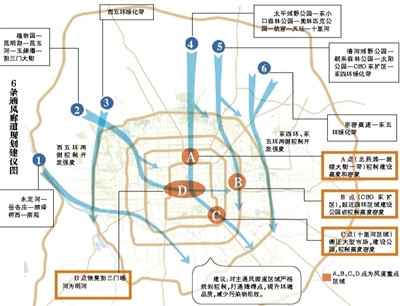【背景】
記者20日獲悉,北京正研究6條主要的通風(fēng)廊道,以增強通風(fēng)潛力、緩解熱島效應(yīng)。相關(guān)研究建議,對主通風(fēng)廊道區(qū)域嚴(yán)格規(guī)劃控制,包括控制建設(shè)高度和密度等,同時打通障礙點。
【新聞】
請看《中國日報》的報道:
In its latest effort to tackle air pollution, Beijing plans to channel wind through streets to blow away the dirty air, reported the Beijing News on Friday.
據(jù)《新京報》周五報道,北京計劃在建立通風(fēng)廊道,吹散污染空氣,這是北京為治理污染做出的最新努力。
【講解】
blow away the dirty air是吹散污染空氣。
據(jù)北京市城市規(guī)劃設(shè)計研究院相關(guān)人士表示,目前正研究6條主要的通風(fēng)廊道(wind corridors),在靜穩(wěn)無風(fēng)的不利氣象條件下,污染物容易積累。因此,把郊外的風(fēng)引進主城區(qū)(urban center),或?qū)⒊蔀轵?qū)散霧霾和空氣污染物(remove the air pollutants)的有效方式。
目前該研究院正在研究建立風(fēng)道(wind passages)的可行性(viability),結(jié)果將于年底公布。
同時,該研究還建議控制建設(shè)高度和密度(control the height and density of buildings)等。
不僅是北京,近年來,上海、杭州、武漢、南京、株洲、貴陽、紹興、福州等多個城市也紛紛傳出類似聲音,將進行城市風(fēng)道規(guī)劃,作為治理大氣污染(tackle air pollution problem)的手段之一。
但是,中國人民大學(xué)環(huán)境學(xué)院教授宋國君認為,北京每次遇到重污染(heavy pollution)過程基本處于無風(fēng)的靜穩(wěn)狀態(tài),有風(fēng)道但沒風(fēng)解決不了空氣污染問題(not solve the air quality problem),治理大氣污染,根本還是要治理污染源(controll the source of pollution)。

可可原創(chuàng),未經(jīng)許可請勿轉(zhuǎn)載











